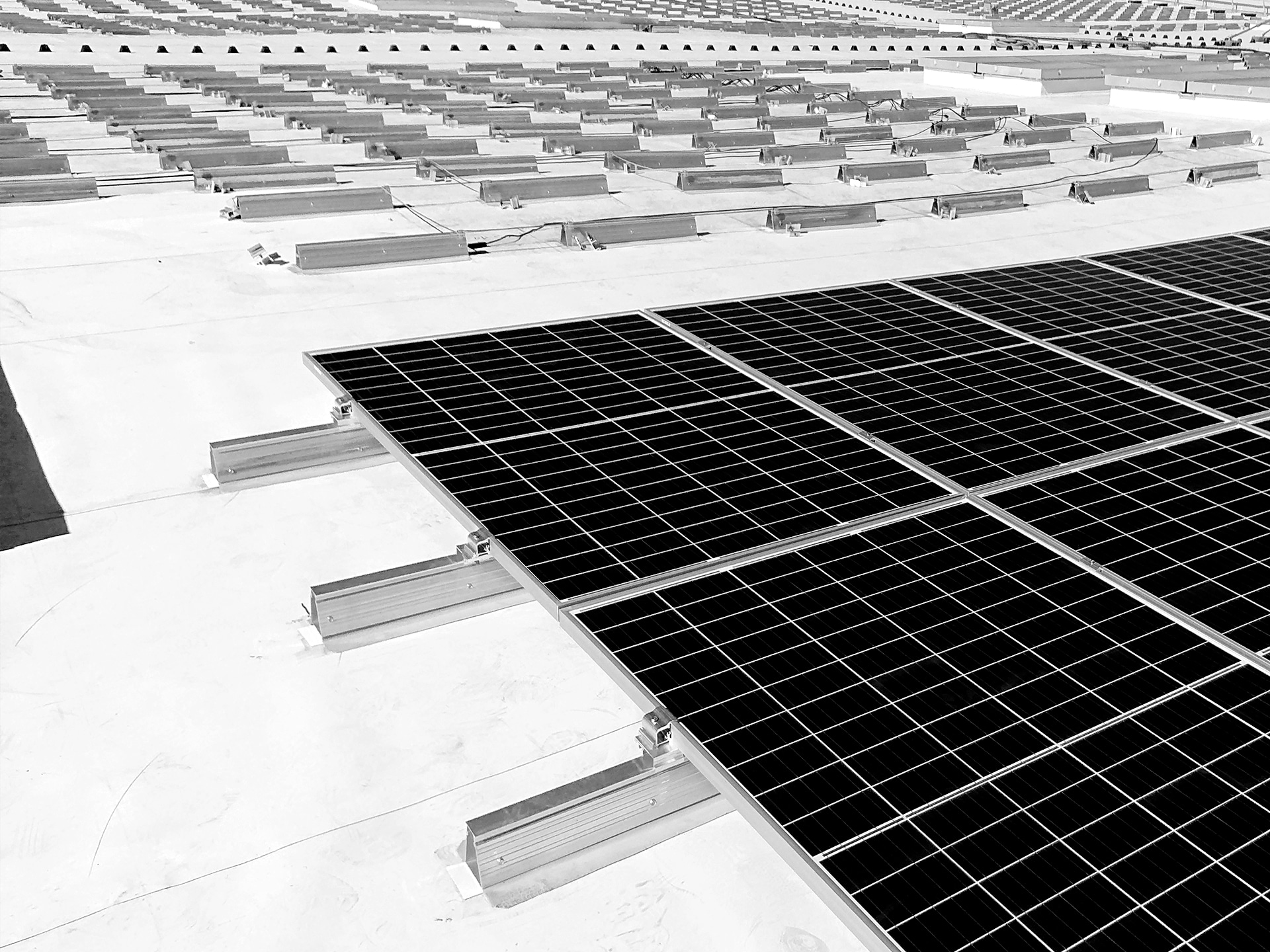TPO Flat Roofs
A number of advantages make the TPO membrane one of the best solutions for waterproofing flat roofs of eco-responsible buildings. The energy balance of the building is therefore retained due to the light colour of TPO, its long service life and its excellent resistance to ultraviolet radiation and ozone. TPO flat roofs are also highly resistant to bacteria!
PHOTOVOLTAIC MOUNTING FOR TPO FLAT ROOFS
ROOF-SOLAR TPO
The Roof-Solar TPO photovoltaic mounting on synthetic waterproofing membrane.
ROOF-SOLAR TILTED TPO
The Roof-Solar Tilted TPO photovoltaic mounting on synthetic waterproofing membrane.
THE TPO MEMBRANE, A HUGE BENEFIT FOR ECOLOGICAL AND SUSTAINABLE FLAT ROOFS
Outstanding service life
The service life of a 1.8mm thick TPO membrane is several decades. Both in real life cases and in laboratory tests, TPO membranes retain their physical properties even after ageing.
TPO is extremely resistant to the negative effects of ozone, UV rays and fungus. Its light colour reflects the sun’s rays. Therefore, flat roofs equipped with a TPO membrane store less heat. This solution can be used to counteract the heat island effect, particularly in urban areas.
An ecological membrane
TPO is free of plasticizers, halogenated flame retardants and all other toxic components. In fact, there is virtually no environmental impact during its manufacture or use.
A TPO membrane free of halogenated substances makes recycling easier, which is an important factor given recent collective environmental awareness.
SIMPLE TO IMPLEMENT
The membrane is installed by mechanical fastening, i.e. strips are fixed using suitable screws and plates. Joints are then hot air welded. The upper and lower membranes then become one.



